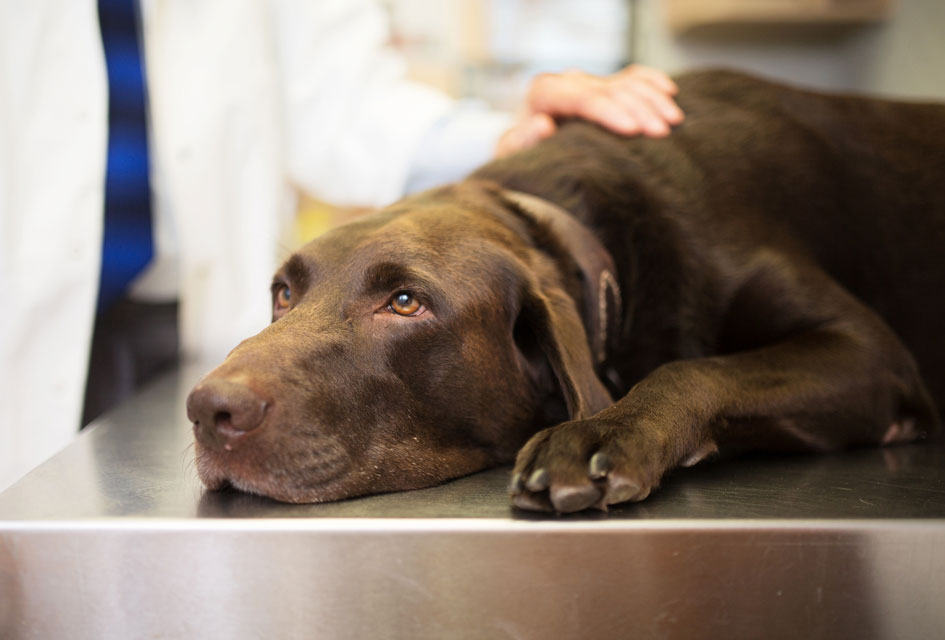Hypovolemic Shock in Dogs

Hypovolemia is the state during which a dog's blood volume is decreased. It can occur because of blood loss or fluid loss from the cells. When the blood volume depletes to the point that the heart and brain can't get enough oxygen, the dog is in hypovolemic shock.
Hypovolemic shock in dogs is basically a collapse of the circulatory system.
What Causes Shock in Dogs?
Shock can be caused by a few different conditions:
- Blood loss, either internally or externally, caused by trauma such as being hit by a car.
- Severe bleeding into the GI tract from certain medications, cancer, or a problem that decreases platelets (thrombocytopenia) or interferes with their function.
-
Severe bleeding from the nose (epistaxis) can lead to shock. It can be caused by nasal infection, cancer, or thrombocytopenia.
- Internal blood loss caused by ingesting rat or mouse poison or another cause of coagulation dysfunction.
- Extreme fluid loss from a bad burn or severe vomiting and diarrhea.
Signs of Shock in Dogs
Signs that indicate a dog may be suffering from hypovolemic shock include:
- Increased heart rate (may become decreased as the condition progresses)
- Low blood pressure
- Difficult to find pulses
- Fast breathing
- Cool or cold paws
- Weakness
- Low temperature
- Pale mucous membranes
- Depression
- Collapse
As the condition progresses, signs of multiple organ function appear.
Diagnosis of Shock in Dogs
Diagnosis of shock is made mainly through a physical exam that reveals signs of circulatory collapse (including increased respiratory rate, low blood pressure, pale membranes, and weakness).
Blood work, x-rays, coagulation tests, and other testing can help narrow down the primary cause of the hypovolemic shock.
Treatment of Shock in Dogs
Dogs that are suffering from shock must be hospitalized in a veterinary clinic for aggressive, intensive care. IV fluid therapy will be initiated to help build up the volume in the circulatory system, and an electrolyte solution will help stabilize the blood.
Oxygen therapy is also necessary to help compensate for the loss of oxygen to the tissues due to poor circulation.
Once the dog is stable, the primary condition which caused the shock must be treated. The prognosis depends on how treatable that condition is.
Other types of shock in dogs include septic, anaphylactic, and cardiogenic.
You May Also Like These Articles:
Common Blood Tests Done on Dogs
Disclaimer: This website is not intended to replace professional consultation, diagnosis, or treatment by a licensed veterinarian. If you require any veterinary related advice, contact your veterinarian promptly. Information at DogHealth.com is exclusively of a general reference nature. Do not disregard veterinary advice or delay treatment as a result of accessing information at this site. Just Answer is an external service not affiliated with DogHealth.com.
Notice: Ask-a-Vet is an affiliated service for those who wish to speak with a veterinary professional about their pet's specific condition. Initially, a bot will ask questions to determine the general nature of your concern. Then, you will be transferred to a human. There is a charge for the service if you choose to connect to a veterinarian. Ask-a-Vet is not manned by the staff or owners of DogHealth.com, and the advice given should not delay or replace a visit to your veterinarian.



